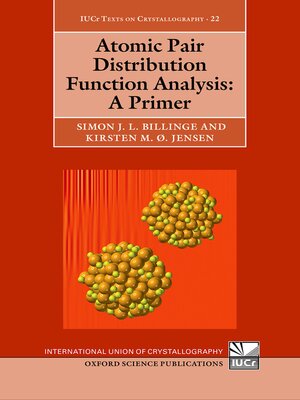Atomic Pair Distribution Function Analysis
ebook ∣ A Primer · International Union of Crystallography Texts on Crystallography
By Simon Billinge

Sign up to save your library
With an OverDrive account, you can save your favorite libraries for at-a-glance information about availability. Find out more about OverDrive accounts.
Find this title in Libby, the library reading app by OverDrive.



Search for a digital library with this title
Title found at these libraries:
| Library Name | Distance |
|---|---|
| Loading... |
Since the early 1990s the atomic pair distribution function (PDF) analysis of powder diffraction data has undergone something of a revolution in its ability to do just that: yield important structural information beyond the average crystal structure of a material. With the advent of advanced sources, computing and algorithms, it is now useful for studying the structure of nanocrystals, clusters and molecules in solution or otherwise disordered in space, nanoporous materials and things intercalated into them, and to look for local distortions and defects in crystals. It can be used in a time-resolved way to study structural changes taking place during synthesis and in operating devices, and to map heterogeneous systems. Although the experiments are somewhat straightforward, there can be a gap in knowledge when trying to use PDF to extract structural information by modelling. This book addresses this gap and guides the reader through a series of real life worked examples that gradually increase in complexity so the reader can have the independence and confidence to apply PDF methods to their own research and answer their own scientific questions. The book is intended for graduate students and other research scientists who are new to PDF and want to use the methods but are unsure how to take the next steps to get started.







